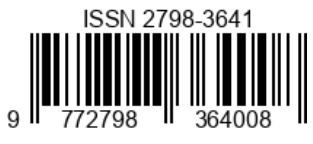MAILLARD AND CARAMELIZATION REACTIONS IN CONFECTIONERY PRODUCTS
Keywords:
Maillard reaction, caramelization, sugar-based confectionery, non-enzymatic browningAbstract
The Maillard reaction and caramelization are two major non-enzymatic browning reactions that play a vital role in shaping the organoleptic characteristics of sugar-based confectionery. These thermal-induced reactions are responsible for the formation of brown pigments, flavor compounds, and aroma volatiles that define the sensory identity of products such as caramel, toffee, and fudge. This review aims to explore the fundamental mechanisms of both reactions, their dependency on ingredient composition and process conditions, and their contribution to color, flavor, and texture development in confectionery systems. Understanding these reactions is essential for optimizing quality while minimizing risks.
References
Davies C, Labuza T. The Maillard Reaction Application to Confectionary Product. Department of Food Science and Nutrition, University of Minnesota. 2000 Oct;
Hartel RW, von Elbe JH, Hofberger R. Confectionery Science and Technology. Cham: Springer International Publishing; 2018.
ALjahdali N, Carbonero F. Impact of Maillard reaction products on nutrition and health: Current knowledge and need to understand their fate in the human digestive system. Crit Rev Food Sci Nutr. 2019 Feb 4;59(3):474–87.
Kathuria D, Hamid, Gautam S, Thakur A. Maillard reaction in different food products: Effect on product quality, human health and mitigation strategies. Food Control. 2023 Nov;153:109911.
Onacik-Gür S, Szafrańska A, Roszko M, Stępniewska S. Interaction of dough preparation method, green tea extract and baking temperature on the quality of rye bread and acrylamide content. LWT. 2022 Jan;154:112759.
Şen D, Gökmen V. Kinetic modeling of Maillard and caramelization reactions in sucrose-rich and low moisture foods applied for roasted nuts and seeds. Food Chem. 2022 Nov;395:133583.
Bolchini S, Nardin T, Morozova K, Scampicchio M, Larcher R. Antioxidant Maillard Reaction Products from Milk Whey: A Food By-Product Valorisation. Foods. 2025 Jan 30;14(3):450.
Billaud C, Adrian J. Louis‐Camille Maillard, 1878–1936. Food Reviews International. 2003 Jan 11;19(4):345–74.
Attokaran M. Natural Food Flavors and Colorants [Internet]. Wiley; 2011. (Institute of Food Technologists Series). Available from: https://books.google.co.id/books?id=9qcvAoMPYW4C
Kocadağlı T, Gökmen V. Caramelization in Foods: A Food Quality and Safety Perspective. In: Encyclopedia of Food Chemistry. Elsevier; 2019. p. 18–29.
Tomasik P. Caramel: Methods of Manufacture. In: Encyclopedia of Food and Health. Elsevier; 2016. p. 633–5.
Mesías M, Palenzuela C, Olombrada E, Holgado F, Morales FJ. Acrylamide and hydroxymethylfurfural formation in roasted almonds (Prunus dulcis). Food Control. 2024 Feb;156:110140.
Farag MR, Alagawany M, Bin-Jumah M, Othman SI, Khafaga AF, Shaheen HM, et al. The Toxicological Aspects of the Heat-Borne Toxicant 5-Hydroxymethylfurfural in Animals: A Review. Molecules. 2020 Apr 22;25(8):1941.
Peng H, Gao Y, Zeng C, Hua R, Guo Y, Wang Y, et al. Effects of Maillard reaction and its product AGEs on aging and age-related diseases. Food Science and Human Wellness. 2024 May;13(3):1118–34.
Huber KC, BeMiller JN. Carbohydrate. In: Fennema’s Food Chemistry, Fifth Edition. 5th ed. CRC Press; 2017.
Edwards WP. The Science of Sugar Confectionery. Cambridge: Royal Society of Chemistry; 2000.
Hofmann T, Haessner R, Schieberle P. Determination of the Chemical Structure of the Intense Roasty, Popcorn-like Odorant 5-Acetyl-2,3-dihydro-1,4-thiazine. J Agric Food Chem. 1995 Aug 1;43(8):2195–8.
Fayle SE, Gerrard JA. The Maillard Reaction [Internet]. Royal Society of Chemistry; 2002. (RSC food analysis monographs). Available from: https://books.google.co.id/books?id=mn0n9G8vnLQC
Somoza V. Five years of research on health risks and benefits of Maillard reaction products: An update. Mol Nutr Food Res. 2005 Jul;49(7):663–72.
Tessier FJ, Birlouez-Aragon I. Health effects of dietary Maillard reaction products: the results of ICARE and other studies. Amino Acids. 2012 Apr 15;42(4):1119–31.
ZHOU YY, LI Y, YU AN. The effects of reactants ratios, reaction temperatures and times on Maillard reaction products of the L-ascorbic acid/L-glutamic acid system. Food Science and Technology. 2016 Jun 20;36(2):268–74.
Messia MC, Caboni MF, Marconi E. Storage Stability Assessment of Freeze-Dried Royal Jelly by Furosine Determination. J Agric Food Chem. 2005 Jun 1;53(11):4440–3.
Akbarabadi M, Mohsenzadeh M, Housaindokht MR. Ribose-induced Maillard Reaction as an Analytical Method for Detection of Adulteration and Differentiation of Chilled and Frozen-thawed Minced Veal. Food Sci Anim Resour. 2020 Apr;40(3):350–61.
Lund MN, Ray CA. Control of Maillard Reactions in Foods: Strategies and Chemical Mechanisms. J Agric Food Chem. 2017 Jun 14;65(23):4537–52.
El Hosry L, Elias V, Chamoun V, Halawi M, Cayot P, Nehme A, et al. Maillard Reaction: Mechanism, Influencing Parameters, Advantages, Disadvantages, and Food Industrial Applications: A Review. Foods. 2025 May 26;14(11):1881.
Boekel VMA. Kinetic aspects of the Maillard reaction: a critical review. Nahrung. 2001 Jun;150–9.
Ramonaitytė DT, Keršienė M, Adams A, Tehrani KA, Kimpe N De. The interaction of metal ions with Maillard reaction products in a lactose–glycine model system. Food Research International. 2009 Apr;42(3):331–6.
Lees R, Jackso EB. Sugar Confectionery and Chocolate Manufacture . Chemical Publishing Company; 1975.
Potter NN, Hotchkiss JH. Food Science: Fifth Edition [Internet]. Springer US; 2012. (Food Science Text Series). Available from: https://books.google.co.id/books?id=GRQJAgAAQBAJ
Jackson EB. Sugar Confectionery Manufacture [Internet]. Springer US; 1995. (Chapman & Hall food science book). Available from: https://books.google.co.id/books?id=GFw8HEqnLvIC















